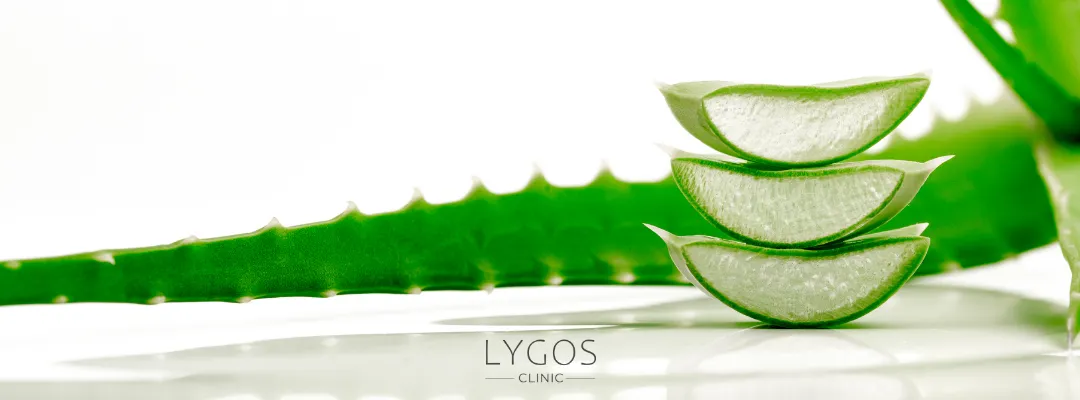Dark Circles Under Eyes | When to Call the Doctor | LYG 2025

Dark Circles Under Eyes: Causes, Remedies, and Treatment Options
Dark circles beneath the eyes can impact one’s self-confidence, often making individuals appear more fatigued or older than they really are. While dark circles are usually not a sign of a serious medical issue, understanding what causes them, how they impact people differently, and what you can do to treat them can make a big difference in both appearance and confidence. Here, we’ll explore the primary causes of Dark Circles Under Eyes, discuss effective remedies and treatments, and outline when it’s time to consult a doctor.
What Are Dark Circles Under Eyes?

Dark circles under eyes are patches of darker skin located just below the lower eyelids. They’re a common issue for many people, and the intensity of dark circles under eyes can vary greatly from one person to another. This region is particularly delicate, which makes it susceptible to displaying signs of tiredness, stress, and other lifestyle factors. Dark Circles Under Eyes are often accompanied by puffiness or swelling, making the area appear even more pronounced.
These areas may appear in various shades—such as blue, purple, brown, or black—depending on an individual’s skin tone, skin thickness, and other contributing factors. This discoloration can happen for a variety of reasons, ranging from genetic factors to environmental influences. Although dark circles under eyes are generally harmless in terms of health, they can be a concern from a cosmetic perspective.
Causes and Contributing Factors

Several factors may lead to dark circles under eyes. Understanding these causes can help in determining which treatments or lifestyle changes might best address them. Here are the main contributors:
Fatigue and Lack of Sleep
One common cause is insufficient sleep. Insufficient sleep often leads to a pale or dull complexion, which can make underlying blood vessels more visible, giving the area a darker hue.
Aging
As skin ages, it naturally loses collagen and becomes thinner, which may cause dark circles under eyes to become more noticeable. The skin around the eyes is particularly thin and sensitive, which is why Dark Circles Under Eyes can become more apparent over time.
Genetics
Heredity plays a big role. Dark circles under eyes can be more pronounced in people with inherited traits such as thinner skin around the eyes or a tendency for increased pigmentation.
Allergies
Allergies can cause itching and rubbing around the eyes, which may lead to irritation and the appearance of Dark Circles Under Eyes. Additionally, congestion can dilate the blood vessels around the eyes, making them more noticeable.
Lifestyle Factors
Lifestyle choices, including heavy alcohol consumption, smoking, and poor diet, can also cause dehydration, which can make dark circles under eyes appear worse. Lack of hydration makes the skin appear sunken and less vibrant, enhancing the shadowing effect around the eyes.
Exposure to the Sun
Overexposure to sunlight increases the production of melanin, the pigment that gives skin its color, and can result in hyperpigmentation, making Dark Circles Under Eyes appear darker.
Medical Conditions
In some situations, dark circles under eyes may be linked to health issues such as anemia, thyroid problems, or dehydration. Conditions that cause blood vessels to dilate or that increase skin pigmentation can also make dark circles more visible.
Who Do Dark Circles Under Eyes Affect?
Dark circles under your eyes can affect anyone, but certain groups are more susceptible:
- People with genetic predispositions: Those who inherit thinner skin or hyperpigmentation are more likely to have noticeable dark circles under eyes.
- Older adults: As the skin naturally loses collagen, older individuals may notice more pronounced dark circles under eyes.
- Individuals with allergies or asthma: People with these conditions may experience increased blood flow and pigmentation changes around the eyes.
- Individuals with darker skin tones: Darker skin contains more melanin, which can lead to hyperpigmentation and more visible dark circles under eyes.
Recognizing your personal risk factors can help you take steps to reduce or prevent the appearance of Dark Circles Under Eyes.
Dark Circle Removal Home Remedies

If you want to lessen the appearance of dark circles under eyes naturally, there are several effective remedies to consider. Home remedies can be simple yet helpful ways to lighten dark areas and refresh the skin.
Cold Compresses
Applying a cold compress or ice pack to the area under the eyes can reduce swelling and shrink blood vessels, minimizing the appearance of dark circles under eyes.
Tea Bags
Tea, especially green or black tea, contains antioxidants and caffeine that can improve circulation and reduce dark circles under eyes. Place tea bags in warm water, then refrigerate them before applying under the eyes for 10–15 minutes.
Cucumber Slices
Cucumbers have mild astringent and hydrating properties that can soothe and lighten dark circles under eyes. Place cool cucumber slices over the eyes for about 10 minutes to refresh the area.
Aloe Vera Gel
Aloe vera, known for its soothing effects, can be applied around the eyes to moisturize and boost skin elasticity. Apply a few drops beneath the eyes to hydrate and lighten the area.
Vitamin E Oil
Vitamin E oil, known for its antioxidant benefits, can nourish the skin and may help minimize the appearance of dark circles under the eyes.
Sleep and Hydration
Proper rest and adequate hydration are simple yet effective ways to prevent dark circles. Try to sleep for at least 7–8 hours nightly and drink enough water throughout the day.
Cosmetic Treatment for Dark Circles

When home remedies aren’t enough, cosmetic treatments offer alternative options for addressing Dark Circles Under Eyes. Here are some effective treatments:
Topical Creams and Serums
Dermatologists may recommend creams containing ingredients like retinol, vitamin C, or hyaluronic acid to boost collagen, reduce pigmentation, and improve skin elasticity.
Chemical Peels
Chemical peels can reduce hyperpigmentation and stimulate collagen production. Chemical peels formulated for the under-eye area can also help reduce dark circles, though multiple sessions may be needed for optimal results.
Laser Therapy
Laser treatments can target pigment cells and broken capillaries, helping reduce discoloration under the eyes. While certain treatments can be effective in reducing dark circles under eyes, they may require multiple sessions to achieve the best results.
Fillers
Dermal fillers, usually composed of hyaluronic acid, are injected under the eyes to add volume and diminish the hollow appearance that contributes to Dark Circles Under Eyes.
Microneedling and PRP (Platelet-Rich Plasma)
Microneedling, combined with PRP injections, is a procedure that encourages collagen production and skin renewal. It’s particularly helpful for individuals with dark circles under eyes caused by thinning skin.
Surgery (Blepharoplasty)
In more advanced cases, surgical options are available to remove excess skin or fat beneath the eyes for a more lasting improvement. This surgical procedure, known as blepharoplasty, can permanently reduce dark circles under eyes and puffiness for a youthful appearance.
When to Call the Doctor
While Dark Circles Under Eyes are typically a cosmetic issue, there are times when you should consult a doctor. Here’s when you might consider seeking medical advice:
- Persistent or Severe Discoloration: If your dark circles are intense and don’t improve with home treatments, it may indicate an underlying health issue.
- Pain, Swelling, or Vision Issues: Accompanied by pain, swelling, or changes in vision could signal an infection or other medical concern.
- Underlying Medical Conditions: If conditions such as anemia, allergies, or thyroid disorders are present, dark circles may be a symptom. Addressing these underlying conditions may reduce dark circles.
- Unexplained Symptoms: Dark Circles Under Eyes along with fatigue, weakness, or other symptoms might warrant a health check-up to rule out any systemic issues.
Dark circles under eyes may feel challenging to manage, but by understanding the root causes and available treatments, you can find an approach that works for you. Whether using natural remedies or professional treatments, consistent application is key to achieving and maintaining visible results. Remember, if your dark circles under eyes are persistent or you’re experiencing other symptoms, a consultation with a healthcare provider can help ensure that there are no underlying health concerns.
You can click on the link to follow our social media content.


